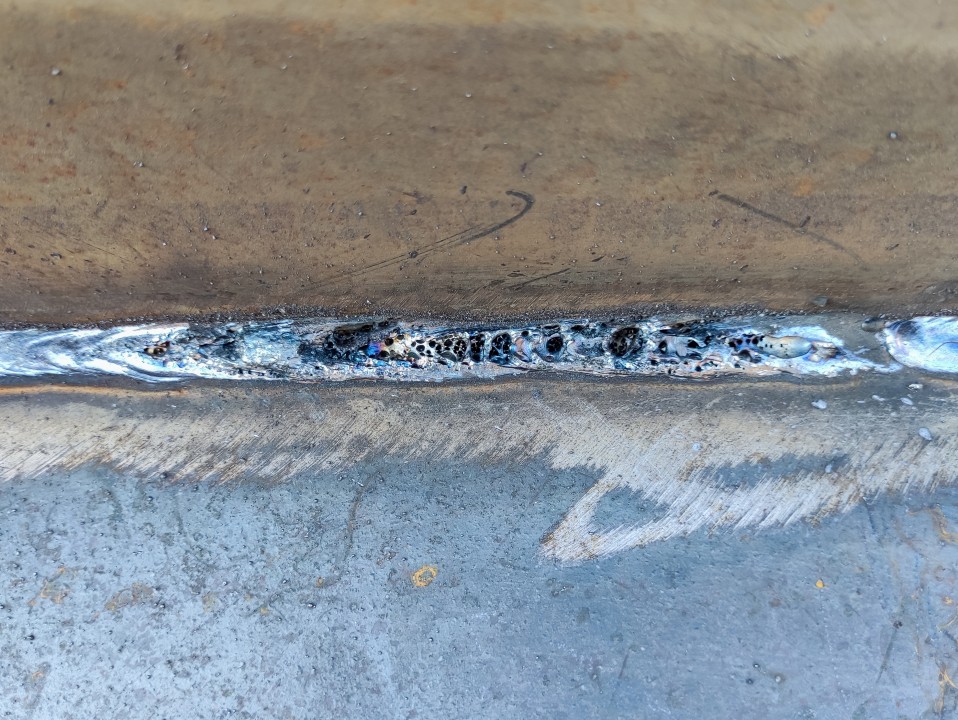What is Porosity in Welding: Trick Factors and Their Impact on Weld Quality
What is Porosity in Welding: Trick Factors and Their Impact on Weld Quality
Blog Article
The Science Behind Porosity: A Comprehensive Overview for Welders and Fabricators
Recognizing the intricate systems behind porosity in welding is vital for welders and makers striving for flawless workmanship. As metalworkers explore the midsts of this phenomenon, they discover a globe governed by different aspects that affect the formation of these small spaces within welds. From the structure of the base materials to the complexities of the welding process itself, a wide range of variables conspire to either intensify or ease the presence of porosity. In this comprehensive overview, we will certainly unwind the science behind porosity, exploring its effects on weld top quality and introduction advanced methods for its control. Join us on this trip with the microcosm of welding flaws, where precision fulfills understanding in the search of perfect welds.
Recognizing Porosity in Welding
FIRST SENTENCE:
Examination of porosity in welding exposes crucial insights into the honesty and quality of the weld joint. Porosity, characterized by the presence of tooth cavities or voids within the weld metal, is a typical issue in welding procedures. These voids, otherwise appropriately attended to, can endanger the architectural stability and mechanical homes of the weld, bring about potential failures in the ended up product.

To identify and quantify porosity, non-destructive testing methods such as ultrasonic testing or X-ray assessment are commonly utilized. These methods permit for the recognition of internal defects without compromising the integrity of the weld. By examining the dimension, form, and circulation of porosity within a weld, welders can make enlightened choices to boost their welding procedures and attain sounder weld joints.

Factors Influencing Porosity Formation
The occurrence of porosity in welding is affected by a myriad of factors, varying from gas shielding performance to the details of welding parameter setups. Welding parameters, consisting of voltage, current, take a trip rate, and electrode kind, likewise impact porosity development. The welding method used, such as gas metal arc welding (GMAW) or protected steel arc welding (SMAW), can influence porosity formation due to variants in heat circulation and gas protection - What is Porosity.
Results of Porosity on Weld Quality
Porosity development dramatically jeopardizes the structural stability and mechanical residential or commercial properties of welded joints. When porosity exists in a weld, it develops gaps or tooth cavities within the product, decreasing the general toughness of the joint. These voids function as anxiety focus points, making the weld a lot more at risk to breaking and failure under tons. The visibility of porosity likewise damages the weld's resistance to rust, as the caught Read More Here air or gases within the gaps can react with the surrounding atmosphere, causing destruction in time. In addition, porosity can impede the weld's capability to hold up against pressure or effect, additional threatening the overall high quality and dependability of the welded framework. In vital applications such as aerospace, automotive, or structural building and constructions, where safety and durability are critical, the destructive impacts of porosity on weld top quality can have extreme consequences, highlighting the relevance of decreasing porosity with proper welding methods and procedures.
Strategies to Reduce Porosity
Furthermore, using the ideal welding parameters, such as the proper voltage, present, and travel speed, is important in avoiding porosity. Keeping a consistent arc size and angle during welding also assists minimize the probability of porosity.

Utilizing the suitable welding strategy, YOURURL.com such as back-stepping or using a weaving activity, can likewise help distribute warmth uniformly and reduce the opportunities of porosity formation. By applying these methods, welders can efficiently minimize porosity and generate top notch bonded joints.

Advanced Solutions for Porosity Control
Executing cutting-edge modern technologies and cutting-edge techniques plays a pivotal role in achieving remarkable control over porosity in welding processes. One sophisticated service is using innovative gas mixtures. Shielding gases like helium or a blend of argon and hydrogen can help in reducing porosity by giving much better arc security and enhanced gas coverage. In addition, using sophisticated welding strategies such as pulsed MIG welding or modified environment welding can additionally assist minimize porosity concerns.
One more innovative remedy involves using innovative welding devices. For example, making use of devices with built-in features like waveform control and innovative source of power can enhance weld here are the findings quality and minimize porosity dangers. Moreover, the execution of automated welding systems with precise control over parameters can substantially minimize porosity problems.
Furthermore, including innovative surveillance and inspection technologies such as real-time X-ray imaging or automated ultrasonic screening can assist in spotting porosity early in the welding process, enabling instant restorative actions. In general, integrating these advanced services can considerably boost porosity control and boost the general high quality of welded components.
Verdict
In final thought, comprehending the science behind porosity in welding is crucial for welders and producers to produce top notch welds - What is Porosity. Advanced services for porosity control can better improve the welding process and ensure a solid and dependable weld.
Report this page